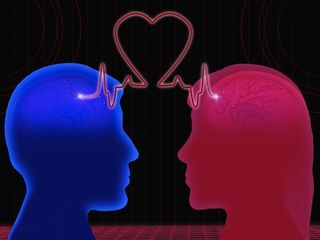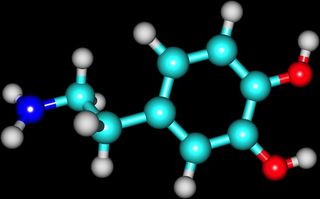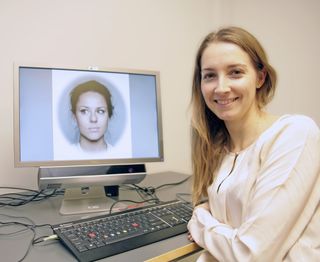5 Ways Love Affects the Brain
Love in the brain

"Love looks not with the eyes, but with the mind," as Shakespeare's Helena said in "A Midsummer Night's Dream" — and perhaps neuroscientists would agree.
Love might seem to move in mysterious ways, but scientists actually have a pretty good idea of what love does to the brain. Being in love floods the brain with chemicals and hormones that produce feelings of pleasure, obsession and attachment. Here's a look at five ways love affects the brain.
Read more: 12 scientifically proven signs of love
Hormones go haywire

Neuroscientists divide love into three phases: lust, attraction and attachment. During the lust phase, hormones flood the body with feelings of intense desire. Adrenaline and norepinephrine make the heart race and the palms sweat, while the brain chemical dopamine creates feelings of euphoria. The brain releases dopamine in response to other pleasurable stimuli too, including drugs, which explains the so-called lovers' high. [How Do I Love Thee? Experts Count 8 Ways]
Works like a drug

Even before people fall in love, seeing an attractive face activates the same part of the brain as do painkillers such as morphine: the opioid system. This part of the brain is responsible for feelings of "liking." A recent study showed that men who were given small doses of morphine rated photographs of women's faces as more attractive than did men who didn't get any morphine, suggesting the opioid system can be "primed" to perceive attractiveness.
Makes the blood pump

Being in love increases blood flow to the brain's pleasure center, the nucleus accumbens. Magnetic resonance imaging (MRI) scans show this region lights up when people are in love. The surge in blood flow usually happens during the attraction phase, when partners become fixated on each other.
Makes brain a little 'OCD'

Love lowers levels of the brain chemical serotonin, a common attribute of obsessive-compulsive disorders. The serotonin drop could explain why lovers display such single-minded concentration on the object of their affection. These feelings can also cause lovers to be blind to their partner's undesirable traits in the early stages of a relationship, choosing to focus only on their partner's good qualities.
Hormones create attachment

After people have been in love for some time, the body develops a tolerance to the pleasurable chemicals. The attraction phase gives way to the attachment phase, when the hormones oxytocin and vasopressin permeate the brain and create feelings of well-being and security.
Sign up for the Live Science daily newsletter now
Get the world’s most fascinating discoveries delivered straight to your inbox.

